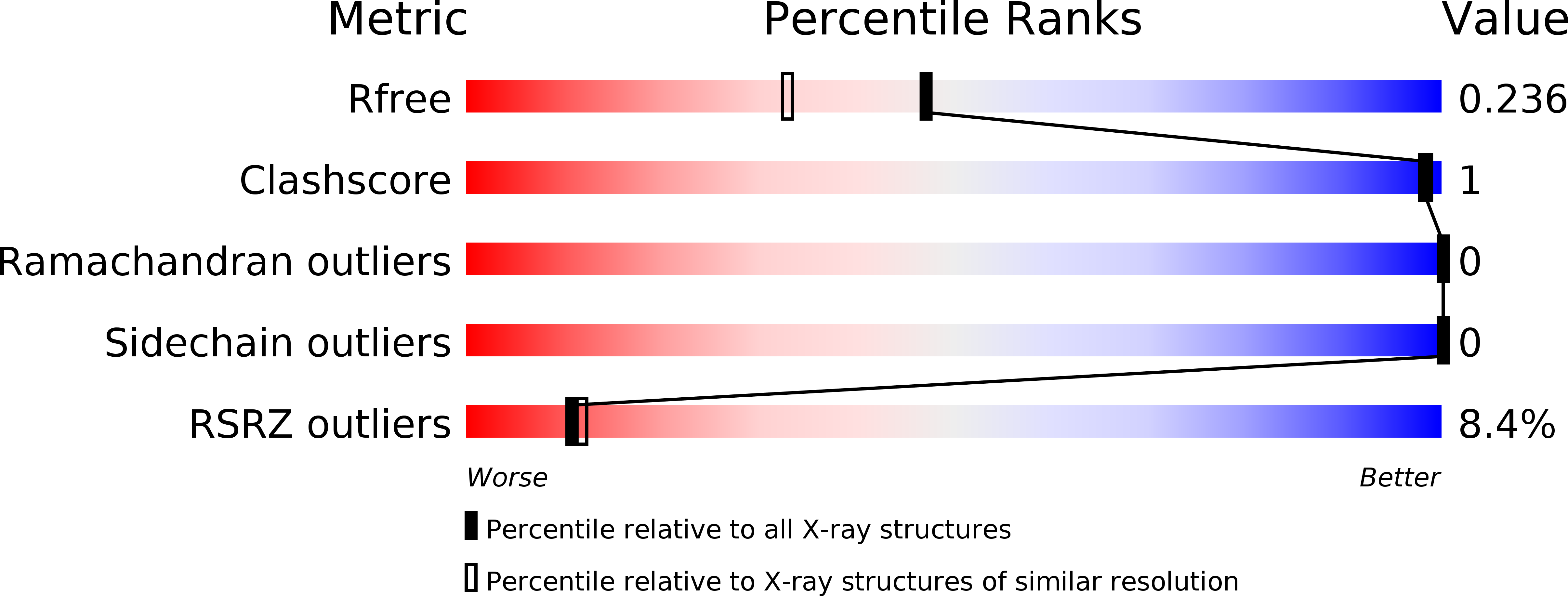Structural Basis of the Human Endoglin-BMP9 Interaction: Insights into BMP Signaling and HHT1.
Saito, T., Bokhove, M., Croci, R., Zamora-Caballero, S., Han, L., Letarte, M., de Sanctis, D., Jovine, L.(2017) Cell Rep 19: 1917-1928
- PubMed: 28564608
- DOI: https://doi.org/10.1016/j.celrep.2017.05.011
- Primary Citation of Related Structures:
5HZV, 5HZW, 5I04, 5I05 - PubMed Abstract:
Endoglin (ENG)/CD105 is an essential endothelial cell co-receptor of the transforming growth factor β (TGF-β) superfamily, mutated in hereditary hemorrhagic telangiectasia type 1 (HHT1) and involved in tumor angiogenesis and preeclampsia. Here, we present crystal structures of the ectodomain of human ENG and its complex with the ligand bone morphogenetic protein 9 (BMP9). BMP9 interacts with a hydrophobic surface of the N-terminal orphan domain of ENG, which adopts a new duplicated fold generated by circular permutation. The interface involves residues mutated in HHT1 and overlaps with the epitope of tumor-suppressing anti-ENG monoclonal TRC105. The structure of the C-terminal zona pellucida module suggests how two copies of ENG embrace homodimeric BMP9, whose binding is compatible with ligand recognition by type I but not type II receptors. These findings shed light on the molecular basis of the BMP signaling cascade, with implications for future therapeutic interventions in this fundamental pathway.
Organizational Affiliation:
Department of Biosciences and Nutrition and Center for Innovative Medicine, Karolinska Institutet, Huddinge 14183, Sweden.















